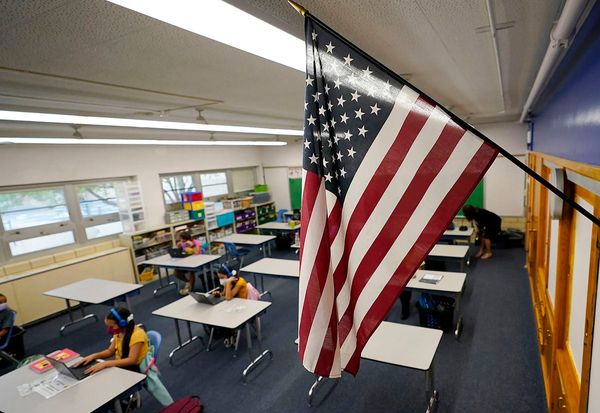WASHINGTON _ President Donald Trump could be eliminating tens of thousands of visas granted to Canadian and Mexican professionals who come to the United States to work as accountants, nutritionists and engineers as part of his new trade agreement with Mexico.
Or he could be setting himself up for a political loss by keeping the same number of so-called Treaty NAFTA or TN visas with Canada and Mexico even as he campaigned on the notion of "Buy American, Hire American" in 2016.
No one seems to know.
People who have followed the issue closely have been told vastly different things about whether the TN visa is even mentioned in the bilateral agreement Trump lauded this week, calling it the U.S.-Mexico trade deal, instead of the North American Free Trade Agreement as it has been known since 1994.
"There is not a lot of optimism at this point," said Eric Miller, a trade consultant who has worked for the Canadian government and advises them on the negotiations.
Administration fact sheets about the trade deal don't mention any visas. No text of the proposed agreement has been released.
When asked if the number of TN visas was changing or if the TN visas are even part of the new agreement, a senior administration official simply said "No" without elaborating.
The White House and U.S. Trade Representative's office haven't answered repeated follow-up questions.
Mexican officials said "there were no changes with the U.S.," but did not provide details of whether the new agreement keeps the same language and/or criteria for allotting visas.
Trump announced the deal in front of reporters Monday with Mexican President Enrique Pena Nieto dialed in on a conference call. It remains unclear whether Canada, the third country in NAFTA, would agree to the changes.
The administration wanted to limit the number of eligible professions in the TN visa program and decrease the number of visa renewals even though Congress passed a bill in 2016 barring any administration from trying to change the number of visas granted to a country as part of trade negotiations.
If the visa language were excluded from the trade deal, Trump could kill the visa program altogether. But if he did include the language, the program would likely remain. But none of that was clear on Tuesday.
"The way to reduce numbers would be to terminate the program entirely, which I would recommend, or to narrow the types of occupations that qualify for them, which probably would bring down the numbers," said Jessica Vaughan, director of policy studies at the Center for Immigration Studies, which supports limiting the number of TN visas. "There are interest groups that have been lobbying for years to expand the number of qualifying occupations, so in some sense it is a small victory if we just held the line and avoided that this time."
Lawmakers have final approval because Congress must ratify any new version of NAFTA. Congress expects to receive the administration's plan on Friday.
Even Senate Judiciary Chairman Charles Grassley, who urged the administration to reduce the number of TN visas, wouldn't comment on the issue, though he praised the administration for making the deal with Mexico.
The "verbal handshake between presidents Trump and Pena Nieto signified that the administration's top priorities had been agreed to by the respective principals," said spokeswoman Nicole Tieman. "Chairman Grassley will be monitoring the negotiations closely, but will reserve comment on any TN visa-related provisions until the final version is delivered to Congress."
Grassley, R-Iowa, has estimated the number of people with the TN visa could approach 100,000.
Miller said negotiators left discussions about the TN visa largely up to Canada because of the political implications for Mexico.
"Anything to do with immigration is politically risky for Mexico to take on," he said.
But Miller said Canada will be largely focused on protecting its dairy and automobile industries that are currently under threat.
"Unless they get a trilateral deal that is sufficiently expansive to include many of the original elements, that could be it for the TN visa," Miller said.
Trade talks between the U.S. and Canada resumed Tuesday. They were not party to the agreement reached between Mexico and the U.S., even though the original NAFTA covered all three countries.
Fewer than 25,000 TN visas were issued for Mexicans in 2016, including about 10,000 for family members of the TN visa recipients, according to the State Department. No statistics are kept for Canadians, who have a lower bar to meet and can seek the visas when they arrive at the border.
But some Canadian reports have put the number in the tens of thousands. Those who favor restricting immigration argue the program could trigger a flood of immigrants in the United States.
The number of TN visa workers in the U.S. has grown in recent years. In 2008, the length of stay was increased from one year to three, making it an appealing alternative to other high-skilled visas. Approved occupations for the TN visa include accountants, hotel managers, land surveyors, nutritionists, engineers and computer systems analysts.
Groups that want to restrict immigration, including NumbersUSA and Federation for American Immigration Reform, lobbied the Trump administration to cut the number of visas. Both groups declined to comment.
Jorge Guajardo, a senior director at the Washington consulting firm McLarty Associates and a former Mexican diplomat, said it could have been worse, but there are still many questions left to answer before determining whether this is really a positive deal for Mexico.
"Mind you that we were not issued a good set of cards to play with, but I am not sure I can say this is a win-win," he said. "The world is better off. NAFTA is better off. No. No. We're not as bad as we could have been considering the situation we're facing as a country with our northern neighbor."







